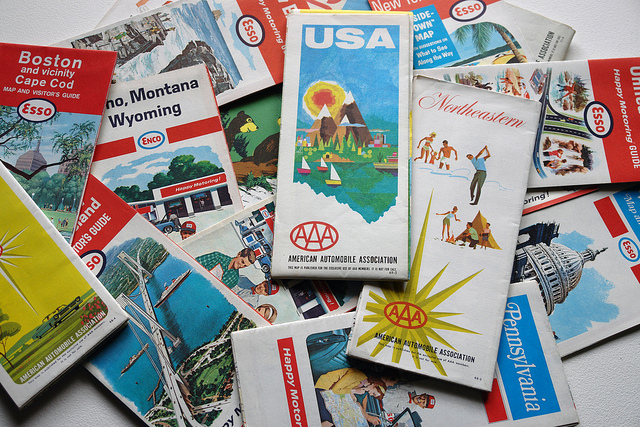 On September 3, the U.S. Wilderness Act turns 50 years old. The law’s call to protect places “where the earth and its community of life are untrammeled by man” has always been poignant, and our enthusiasm for trammeling seems greater every year. So the Wilderness Act’s half-century mark has occasioned a great deal of handwringing. Does wilderness still exist in any meaningful way? Does it matter?
On September 3, the U.S. Wilderness Act turns 50 years old. The law’s call to protect places “where the earth and its community of life are untrammeled by man” has always been poignant, and our enthusiasm for trammeling seems greater every year. So the Wilderness Act’s half-century mark has occasioned a great deal of handwringing. Does wilderness still exist in any meaningful way? Does it matter?
Yeah, it does. And yeah, of course it does.
Despite the beauty of the law’s language, the Wilderness Act wasn’t conceived by woolly-headed nature fantasists. The people who created and sold the notion of wilderness to the nation in the 1930s knew very well that, in the strictest sense, there was no such thing. Even then, before anyone had discerned the global fingerprints of PCBs or climate change, the founders of the Wilderness Society realized that most places had some history of human habitation; most places had experienced some sort of trammeling. Historian Paul Sutter writes:
The founders of the Wilderness Society did see wilderness areas as places meant to preserve pristine nature — “virgin,” “primitive,” or “primeval” were the more frequently used terms — but they almost always spoke of such an ideal in relative rather than absolute terms … more important to the founders was the contrast between the modern, mechanized world of the early twentieth century and the few remaining large areas in the United States where nature dominated.
In other words, the Wilderness Society’s founders weren’t that interested in protecting some abstract Edenic ideal. They had a much more practical mission: protecting big American landscapes from the big American love affair with the automobile. And with the help of the Wilderness Act, they did a remarkable job. The 106 million acres now protected as capital-W Wilderness in the United States are surely affected by climate change, pollution of many kinds, and human-altered wildfire regimes. But by definition, there are no roads within designated wilderness-area boundaries—and that matters a lot.
Roads and the cars that travel them not only kill animals outright but dissect habitat, ignite wildfires, spawn networks of secondary roads, and literally pave the way for motorized tourism, logging, mining, and other extractive activities. Today, large, interlinked roadless areas, whatever their legal label, are one of nature’s best defenses against the uncertainties of climate change and other global threats. (That doesn’t move you? Simply replace “nature” with “the transnational entity that provides your food and water.”)
While other wealthy countries have adopted various kinds of wilderness laws, the protective strength of the Wilderness Act is a distant dream in places like the Amazon, where new roads are the single biggest factor determining the pattern and pace of illegal land colonization, poaching, mining and clearcutting. “The best thing you could do for the Amazon,” the Brazilian scientist Eneas Salati says, “is to bomb all the roads.”
Worldwide, roads are now multiplying faster than at any other time in human history: 15 million miles of new roads are expected to be built by 2050, with nine-tenths of that mileage in developing countries. But as environmental threats go, roads are also—as the founders of the Wilderness Society realized more than a half-century ago—relatively easy to fight. “In practical terms, it is far easier to cancel or relocate a road project than it is to, say, reduce human overpopulation or halt harmful climate change,” writes tropical ecologist William Laurance.
So which unprotected roadless areas matter most? In yesterday’s issue of Nature, Laurance and his colleagues described their development of a global map (and detailed local maps) of what they consider to be the world’s most ecologically valuable roadless areas—including large swaths of the Amazon, western China, eastern Russia, and southern Africa. They also pinpoint places where roads could increase agricultural production with comparatively little environmental harm, and places where roadbuilding would benefit agriculture but seriously damage the environment. With nine billion of us expected at the table by 2050, expanding our food supply is crucial, but Laurance and his colleagues hope required roads will be built with an eye to the global costs and benefits.
Quixotic? Perhaps. But so were the founders of the Wilderness Society—and today, their work seems more prescient than ever.
Pile of vintage road maps photo courtesy of Flickr users Adelle and Justin. Creative Commons.
Wilderness areas are wonderful. Most National parks are bordered by them and if you don’t like crowds they are empty compared to the parks. Fun facts: Forest service trail crews cannot use chain saws in Wilderness (they can everywhere else, including national parks), but they can use explosives. I worked on permitting a very old dam located in Wilderness and the maintenance guys could only use hand tools including hand cranked drills. The only time I’ve heard of mechanical items in Wilderness is fighting fires (they can clear trails during clean up after the fires). The trail crew gets to hand saw and blast the standing dead that fall later.